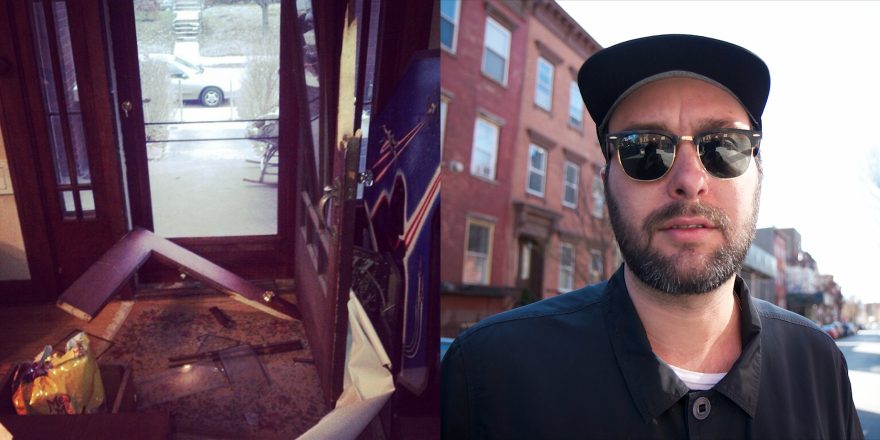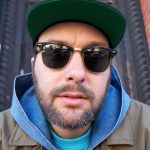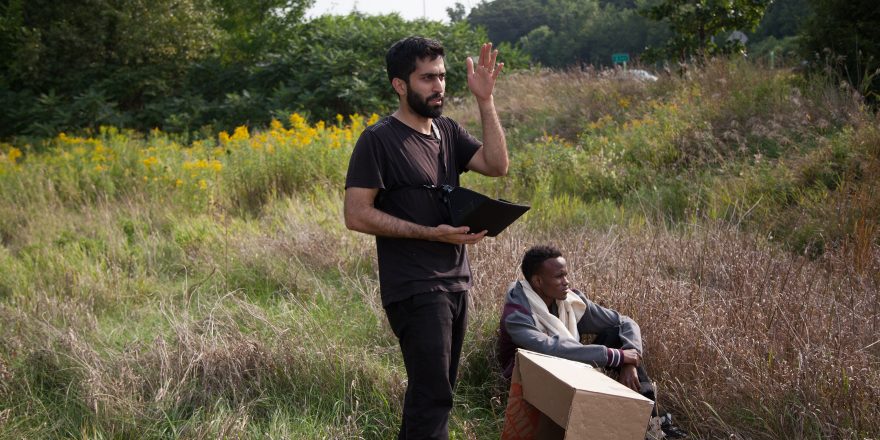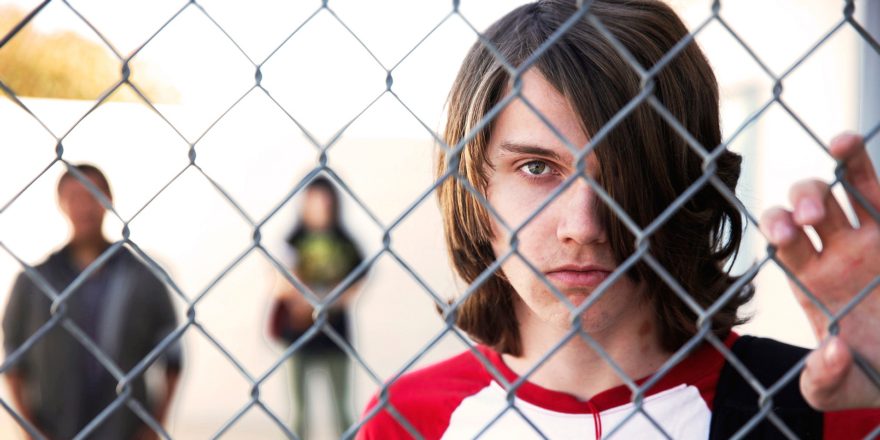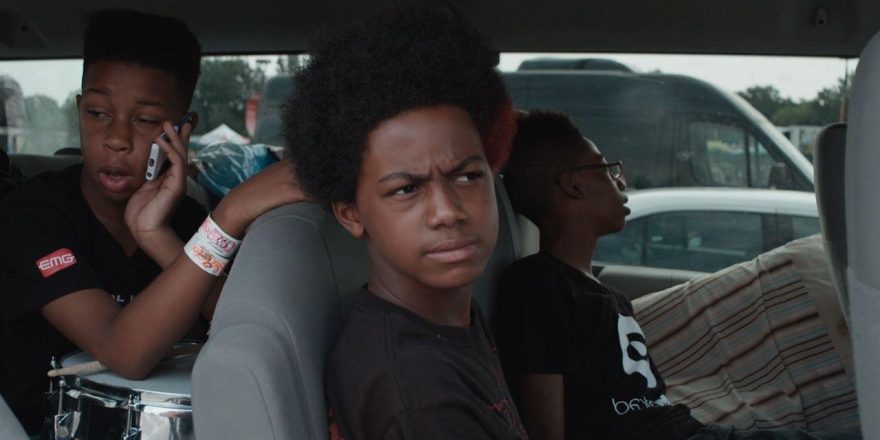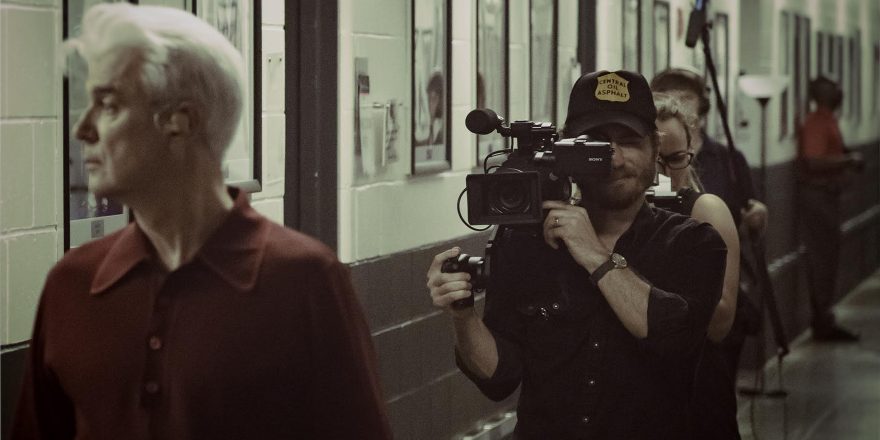It felt like I hadn’t been asleep for more than a few seconds when I heard the crash. I knew my roommate had a penchant for late night snacks, but what time was it? I glanced outside the window to see if his Dodge Neon was parked on the street. Another crash, but this time different. This sounded unnatural. Definitely not the sound of my roommate snacking.
I’d never thought about how and when I might die up until that moment, and I certainly didn’t picture myself dying in Indianapolis, Indiana. I had only lived there a couple months while shooting my latest documentary, Night School, which followed three adults going back to earn their high school degrees. I had learned about this particular school from a short segment on PBS NewsHour – highlighting a unique adult education school in one of the city’s most dangerous neighborhoods. I moved to Indianapolis with the ambition of capturing the journey of everyday Americans hoping to better themselves through education, and I embedded myself in the city’s East Side, an area known more for its violent crime and high poverty rates than its educational institutions.
This wasn’t my first time filming in less than desirable situations. A few years earlier, I made a film about the tiny, impoverished town of Medora, Indiana, which sits on the Kentucky border. The film followed the town’s winless high school basketball team, and the aftermath of the community’s economic collapse. For eight long months, I lived in a rundown motel on the outskirts of town with a small crew while we got to know the townspeople and the players. While we definitely garnered some odd stares and an occasional verbal lashings, I was never scared for my life.
I knew to make a film like Night School, intimacy and access to my subjects was going to be key. It’s not a sexy film about a celebrity or a current hot topic. There was never going to be a big reveal or mysterious ending. The film would live or die based on how closely I could capture the lives of my subjects. I needed to allow audiences to walk in these people’s shoes, deeply understand their world, empathize with their struggles, and celebrate their victories. I knew I needed live in close proximity to the characters featured in the film.
When I told my friend from Indiana that I was moving to Indianapolis’ East Side, his eyes quickly widened. “Are you serious?” he asked. I explained my rationale, but before I could finish he stopped me with some strong words of advice. “Don’t do it,” he said. “Nothing good will come out of it.” I thought to myself for a moment and pondered his statement. Listening to my white, suburban friend go on about the dangers of the inner city was like listening to a nun explain the effects of taking LSD. Neither one had any idea what they were talking about, and I had already made up my mind.
The house I stayed in belonged to a film festival friend of mine. It was located just north of 10th Street, or the “Dirty Dime” as locals called it. This district of the city looked like an evacuated war zone: Abandoned houses, garbage-filled lots, liquor stores and check-cashing joints lined the streets. As the only white dude in the neighborhood, I definitely got a few glares. Cops frequently pulled me over assuming I was looking for drugs or prostitutes. Hearing gunshots was a daily occurrence and the threat of getting one’s car or home broken into was constant.
Besides the obvious physical risks was the overwhelming anxiety and paranoia I felt. I kept things locked up at all times and found myself constantly looking over my shoulder. Nothing in the hood worked properly. The streets were often flooded and snow removal was non-existent. ATMs didn’t work, gas pumps didn’t work, and finding suitable and healthy groceries or restaurants was a non-starter. Each day brought a new and exhausting challenge for the subjects of my film. Cars that didn’t start, buses that ran late, phones that were out of minutes, friends and family in need. Every day there seemed to be a different emergency.
As I grew closer to the subjects of my film, the intensity of the experience of making Night School heightened. No longer were these abstract issues just temporarily affecting me. I had the privilege of being able to go back to Brooklyn in a few months, but the people in my film were stuck here – and always had been. My frustration began to grow into anger. Each day I grew more and more bitter. I had mood swings. I became resentful. The optimist in me became numb.
Back in my bedroom, I rose from my sheets. Another shuffle from downstairs, and the uncertainty of whether or not I was dreaming. Another loud thud. “I’m trippin’,” I thought to myself. “It must be my roommate. It has to be him. He’s always eating weird shit in the middle of the night.” I opened the door and slowly made my way to the top of the staircase. I looked down, and that was definitely not my roommate. It was a man with a black ski mask – and a pistol pointed square in my face.
Everything slowed down. Did I leave the door unlocked? Am I really awake? I scurried back into my bedroom and locked the door behind me. I scrambled to find my cell phone. “I’m calling the cops!” I yelled. I heard footsteps coming up the stairwell. It sounded like two people. My fingers felt like they were in slow motion. What the fuck is the combination to unlock my phone?! I waited for a dispatcher to answer for what felt like an eternity. The robber waled on the wooden door with his fist, turning the knob and trying to get in. Then … suddenly there was nothing but silence. I heard one of them muddle something to the other, and they skirmished back down the stairwell. The dispatcher picked up and I gave her my address. My roommate’s Dodge Neon was still parked outside my window.
The next morning, my roommate and I convened over breakfast. I wasn’t sure if I felt safe in my own home. We put every option on the table, even if it meant moving or buying a gun for protection. We decided that we wouldn’t leave. I had come too far to turn back or run.
I told the subjects of my film about the incident and they comforted me, and even gave me some pointers on what to do if it happened again. Slowly the days turned to weeks and the weeks to months. I continued to film with my subjects daily, capturing their uphill climb to pull themselves out of this place. And as filming continued, my admiration for my subjects grew more intense. Their long waits for the bus in the rain. Hauling themselves to school at 6:00 p.m. on a Friday after working a double. Dropping their kid off to school, then heading back east to continue their education for themselves.
Their courage and perseverance left me in awe, and I couldn’t wait to share their individual stories with a wide audience. Despite the inner-city America’s crushing feeling of unease and despair, they continued to overcome roadblock after roadblock. Night School not only explores issues of race, education and criminal justice, it’s a testament to the perseverance of the human spirit over all kinds of adversity. And most important, I hope it becomes a vehicle for others to understand the feeling of the world being against you. … By the end, I realized that my friend was wrong. Something good came of it. Actually, something great came of it.



